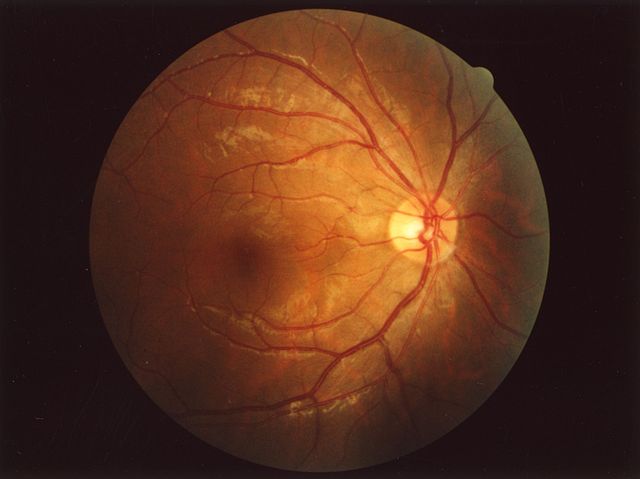Retina Image Analysis
- Project name: Retina Image Analysis
- Tutor: Michael Beyeler (michael.beyeler@unil.ch)
- Slides: File:Retina image analysis.pptx
Retina Image Analysis
Participant : Alexandre Jann, Maylis Touya, Paola Zanchi
Teaching Assistant: Michael Beyeler
Contents
Introduction
We wanted to know if we can link tortuosity of the blood vessel in the eyes with cardiovascular diseases by using programming and bioinformatics.
Why is this project interesting?
This project is quite interesting because it allows us to have a mathematical insight into the determination of diseases and comorbidity risks. Moreover, since an eye fundus is a less invasive physical exam, allowing us to see well the conditions of the blood vessels in a very short amount of time, it seems that it can be a very good exam, and maybe can replace the actuals vascular exams that are invasive and take a long time to be made.
Problematic / Hypothesis
Can we predict the risk of cardiovascular disease from the tortuosity of blood vessels in the eye?
Material and Methods
Material
Eye Fundus
Method
ARIA
It is a software originally used for measuring the tortuosity of a plant's roots. In fact, ARIA stands for Automatic Root Image Analysis, and has been shown at first in this paper [1]. Here, it has been used to measure the tortuosity of blood vessels in fundus images.
Tortuosity measurement :
We used the density factor (called DF) to calculate the tortuosity of the blood vessels. It consists of the ratio between the length of a line and the length between its first and last point.
The formula for the distance ratio (DF) with the total length of the segment (numerator) divided by the
Statistical tools :
We used the quantile method to determine the outliers of our DF: all the DFs that were above the 3rd quantile were set as irrelevant.
Results
Firstly, by plotting each point found by ARIA and adapting their diameter to the one found by the software, we managed to find that there are some fundus that are way more tortuous than other, just by looking at them and by looking at their plotted blood vessels.
Discussion
Conclusion
References
- Pace J, Lee N, Naik HS, Ganapathysubramanian B, Lübberstedt T (2014) "Analysis of Maize (Zea mays L.) Seedling Roots with the High-Throughput Image Analysis Tool ARIA (Automatic Root Image Analysis)". PLOS ONE 9(9): e108255. https://doi.org/10.1371/journal.pone.0108255
- Cheung, Carol Yim-Lui et al. “Retinal vascular tortuosity, blood pressure, and cardiovascular risk factors.” Ophthalmology vol. 118,5 (2011): 812-8. doi:10.1016/j.ophtha.2010.08.045
- Strandberg, Timo E, and Kaisu Pitkala. “What is the most important component of blood pressure: systolic, diastolic or pulse pressure?.” Current opinion in nephrology and hypertension vol. 12,3 (2003): 293-7. doi:10.1097/00041552-200305000-00011
Why was this project a challenge?
This project was a huge challenge because of the time: there was a lot of things to say and to explore and not a lot of time to explore everything we had in mind. Also, the COVID pandemic was a huge problem because of the distance between everyone and sometimes temperamental computers. But in the end, after countless hours on this project, we finally managed to upload results that we were proud of.
PDF Files of our work
You can find the PDF of our work on R here for the small dataset.
You can find our R script here.
You can find our intermediate presentation here.
You can find our final PDF report here.
You can find our final presentation here.

